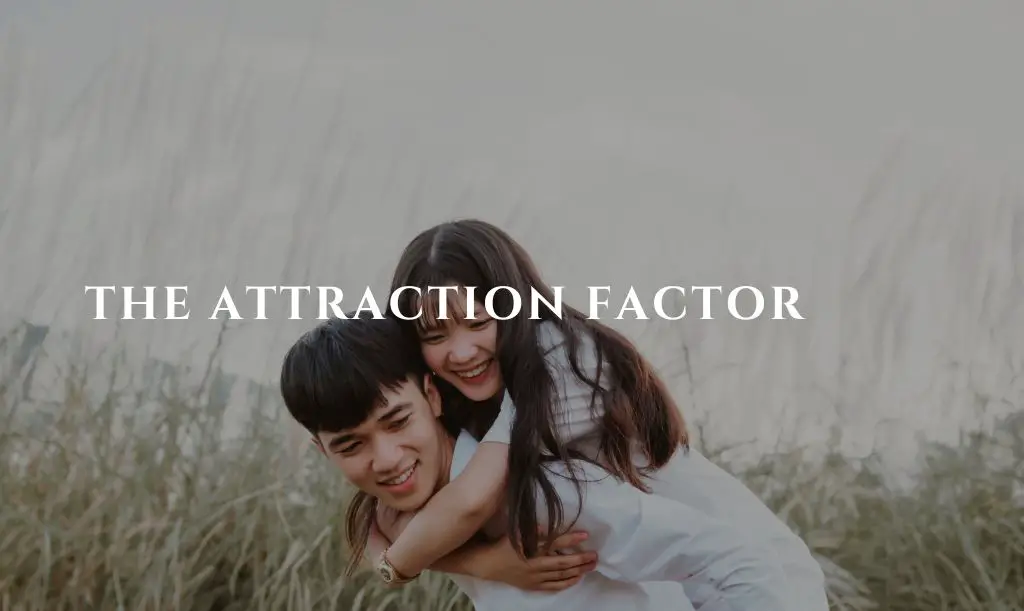Is play fighting truly a sign of attraction?
It is a subject that tickles our curiosity and stirs passionate debates among scholars and individuals alike.
Before we proceed any further, let us establish a clear understanding of what play fighting entails.
Play fighting can be described as a form of physical interaction between individuals that mimics combat without causing harm or danger.
It often involves simulated aggression, such as mock punches, wrestling, or playful jabs.
This behavior is commonly observed in children engaged in rough-and-tumble play activities but also extends to adults who engage in similar playful displays.
Read this: The #1 reason he doesn’t treat you like a priority anymore
So, Is Play Fighting a Sign of Attraction?
Now comes the captivating query that has piqued our interest: does engaging in play fighting indicate an underlying attraction between individuals?
While some may dismiss this notion as ludicrous or juvenile, I believe it behooves us to explore this possibility with an open mind.
After all, human interactions are intricately nuanced and cannot be reduced to simplistic explanations.
To approach this topic objectively, we shall delve into various perspectives encompassing evolutionary biology, psychology, neurobiology, cultural influences, and more.
Understanding Play Fighting

Play fighting is a fascinating behavior that can be observed not only in humans but also across various animal species.
From the mischievous antics of young lion cubs to the exuberant romps of puppies, play fighting serves a vital purpose in their development.
Evolutionary biologists argue that this behavior has evolved as a means to prepare individuals for the challenges they will face as adults.
Just like human children engage in imaginative play to develop cognitive skills, animals engage in play fighting to enhance their physical abilities, establish social hierarchies, and learn crucial survival tactics.
Importance Of Play For Social Development And Learning
Play is not just child’s play; it is a fundamental aspect of social development and learning.
Play fighting provides invaluable opportunities for individuals to interact, negotiate boundaries, and understand the consequences of their actions within a safe context.
Through play fighting, young animals acquire essential skills such as assessing risks, developing reflexes, and sharpening coordination.
Beyond physical prowess, it also fosters cognitive growth by enhancing problem-solving abilities and promoting strategic thinking.
Play Fighting As A Common Form Of Play Behavior
Among the various types of animal play behaviors documented by researchers, play fighting consistently emerges as one of the most prevalent forms.
It involves simulated aggression between individuals who willingly participate while respecting each other’s boundaries.
Play fighting allows animals to practice combat techniques without inflicting harm or causing real conflict.
By engaging in this activity voluntarily and demonstrating self-control when needed, animals refine their understanding of social dynamics and develop emotional regulation skills.
From an evolutionary perspective, it is clear that play fighting serves an important purpose for both animals and humans alike.
It contributes significantly to social development by facilitating physical skills acquisition and fostering cognitive growth through problem-solving and strategic thinking.
Play fighting is not a mere frivolous activity; it is a vital part of individuals’ learning journey as they navigate their way into adulthood.
Read: Why he does the bare minimum (and what to do about it)
The Psychology Behind Play Fighting

In the intricate dance of human interaction, mimicry and imitation play crucial roles.
We are instinctively drawn to individuals who mirror our actions, gestures, and expressions.
This phenomenon is deeply rooted in our psychology and can be attributed to the fascinating concept of mirror neurons.
These specialized cells fire both when we perform an action ourselves and when we observe someone else performing it.
Mirror neurons ignite a profound sense of connection between individuals, fostering empathy and understanding.
This mirroring behavior is often observed during play fighting, where participants naturally imitate each other’s movements, creating a sublime synchrony that transcends verbal communication.
Mirror Neurons And Their Influence On Social Bonding
Mirror neurons hold immense power over our social bonds.
As we engage in play fighting, these extraordinary cells fire away, igniting an intricate web of neural connections.
This neural choreography enhances the feeling of shared experiences as participants synchronize their actions while simultaneously perceiving those actions in others.
Through this process, mirror neurons facilitate the formation of rapport and connection by allowing us to step into each other’s shoes (or perhaps boxing gloves) and experience the world from a shared perspective.
Play Fighting As A Way To Establish Rapport And Connection
Play fighting serves as a captivating avenue for establishing rapport between individuals.
By engaging in playful combat, boundaries are broken down, formalities shed away like armor cast aside after battle.
The lightheartedness that accompanies these interactions creates an environment where vulnerability can emerge safely within the bounds of fun-filled competition.
In this setting, genuine connections can form more readily as people let their guards down through laughter and physical engagement.
Play fighting harnesses the mesmerizing power of mimicry while riding on the coattails of mirror neurons’ influence on social bonding.
As individuals engage in this thrilling dance of playful combat, they establish rapport and connection that transcends superficial interactions.
So, the next time you find yourself engaging in a friendly tussle with someone, don’t dismiss it as mere clowning around.
Beneath the surface lies a profound psychological mechanism at work, forging connections that may just be signs of attraction waiting to be explored further.
Read: How to use ‘reverse psychology’ to win back your ex?
The Attraction Factor (Physicality and Bonding)

When it comes to human interaction, physical touch harbors an unparalleled power.
It transcends mere words and gestures, allowing us to communicate on a deeper level.
Play fighting, with its playful jabs and gentle pushes, provides an avenue for physical contact that is about forging a connection.
The act of play fighting allows individuals to express their affection in a unique way, creating a sense of closeness that words alone cannot achieve.
Neurochemical Basis: Release Of Oxytocin During Physical Touch
Now let’s delve into the science behind this attraction.
Ah, the wonders of neurochemistry! One major player in the realm of bonding and trust-building is none other than oxytocin.
This magnificent hormone is released during moments of physical touch, whether it be a friendly pat on the back or an intimate embrace.
Oxytocin acts as a chemical messenger in our brains, enhancing social bonds and fostering feelings of trust between individuals.
a) Oxytocin’s role in bonding and trust-building
Oxytocin is a marvelous hormone that plays a pivotal role in human relationships by facilitating emotional connections.
When released during physical touch—yes, even during playful exchanges—a surge of oxytocin floods our systems.
This flood works wonders by promoting feelings of closeness, empathy, and attachment towards others involved in the interaction.
So you see, my dear readers, play fighting can indeed be a sign of attraction because it elicits the release of oxytocin—a hormone responsible for building bonds and fostering trust.
But don’t mistake this as solely indicative of romantic attraction; friendship also benefits from this delightful neurochemical dance.
Read: Men fall in love with women who know this “secret ingredient”
Cultural Influences on Play Fighting Dynamics

In our diverse and intricately connected world, cultural norms play a significant role in shaping our behavior and social dynamics.
When it comes to play fighting, these norms vary vastly across different cultures.
In Western societies, where individualism often prevails, physical touch is frequently shunned or reserved for intimate relationships.
On the other hand, many Eastern cultures embrace physical touch as a natural part of daily interaction.
These divergent approaches often lead to misunderstandings and misinterpretations when it comes to play fighting as a sign of attraction.
Impact On Individuals’ Comfort Levels With Play Fighting
The impact of cultural norms on an individual’s comfort level with play fighting cannot be overstated.
Growing up in a culture that discourages physical touch can instill a sense of discomfort or even fear when engaged in playful physical interactions.
This discomfort may stem from societal conditioning that labels such behavior as inappropriate or aggressive.
Conversely, individuals hailing from cultures that embrace physical touch may perceive play fighting not only as harmless fun but also as an opportunity for bonding and social connection.
Exploration Of Cultural Differences (E.G., Western Vs Eastern Cultures)
Let us delve deeper into the fascinating dichotomy between Western and Eastern cultures concerning play fighting dynamics.
In Western societies, the emphasis on personal space is prevalent, leading to skepticism and wariness towards any forms of physical contact outside intimate relationships.
However, it would be my audacious contention that this approach may hinder genuine human connection and impede the exploration of attraction within playful contexts.
In contrast, Eastern cultures have long recognized the power of touch to foster social bonds and strengthen interpersonal connections.
From friendly patting on the back to exuberant displays of roughhousing among friends, these cultures appreciate how play fighting can serve as a catalyst for friendship and, in some cases, even romantic interest.
While it is essential to respect and understand cultural differences, it is equally important to question the rigidity of societal norms that limit our ability to express ourselves authentically.
In doing so, we can bridge the gap between cultural perspectives on play fighting and create a more inclusive environment where individuals from diverse backgrounds can navigate the intricate dance of attraction with confidence and respect.
Read: How To Get Your Ex Back (Simple, Proven Techniques)
The Fine Line Between Attraction and Friendship

Within the realm of friendships, play fighting can often blur the lines between attraction and harmless camaraderie.
It is not uncommon to witness friends engaging in playful physical interactions, such as wrestling or playful slaps.
These actions might appear flirty to an outsider’s eyes, causing confusion and raising questions about the nature of their relationship.
However, it is essential to remember that friendships can be built on trust, comfort, and shared interests without necessarily involving romantic undertones.
The Importance Of Context
To truly understand the dynamics behind play fighting within platonic relationships, context plays a pivotal role.
The relationship history between individuals involved must be taken into account along with their communication styles and overall dynamic.
Some friendships may embrace playful physicality as an expression of affectionate teasing or bonding rituals, while others may have established clear boundaries where such actions are off-limits.
Is Play Fighting A Sign Of Attraction? Conclusion
Play fighting can indeed exist within platonic relationships without indicating underlying romantic interest.
Context is key when interpreting these interactions; one must consider the history and dynamics of the relationship at hand.
While play fighting can sometimes resemble courtship displays seen in the animal kingdom, it does not necessarily imply a deeper level of attraction in human interactions.
Understanding these nuances allows us to appreciate the diverse ways individuals relate to one another without jumping to conclusions about their feelings or intentions.
So let us celebrate the joyous expressions of friendship through playful physicality while respecting each person’s boundaries and upholding open communication.
Remember that true connections can thrive even amidst light-hearted roughhousing!
Related Articles:
- https://lovebridgeguides.com/my-female-friend-said-she-misses-me/
- https://lovebridgeguides.com/he-went-from-calling-me-babe-to-my-name/
- Does A Prom Date Mean Anything? (Answered!) - 20 February 2024
- Boyfriend Refers To Me In Third Person (Explained!) - 20 February 2024
- Is Sending Memes Flirting? Find Out Here! - 20 February 2024

